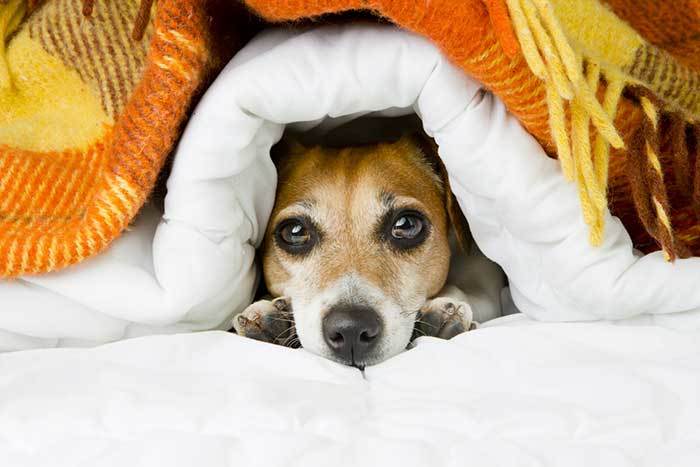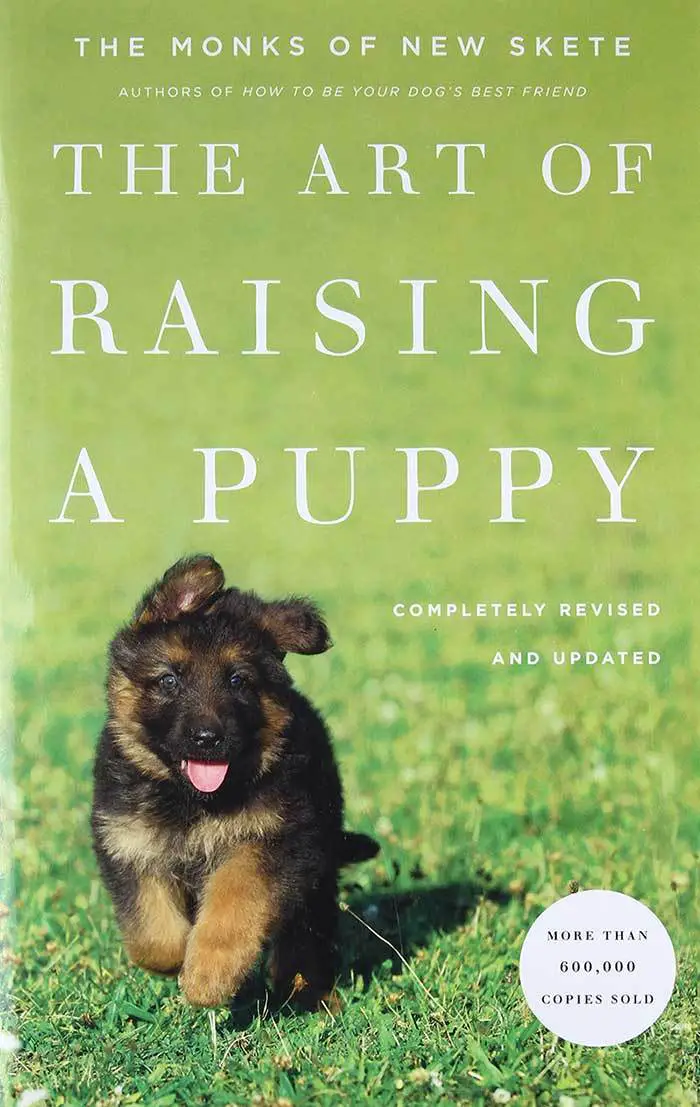Bringing a new puppy home often comes with lots of excitement for the entire family. However, you soon realize that your furry, little friend appears detached and aloof.
Unlike humans, dogs take relatively longer to transition into their new environments. So, how do you make a new puppy feel safe and at home?
Generally, you should begin by creating a pet-safe resting place for your furball. That means an enclosed space that offers your pet comfort, as well as a place where it can easily access food, water, bedding, and other conveniences like doggy toys.
Besides, you might also want to go slow on those family introductions and ensure you only select a time when the pup is least nervous.
Read on for more insights on how to make your new tail-wagging member of the family feel happy and at ease.
What Comprises A Puppy Sanctuary?
First, let’s emphasize that it’s perfectly alright for your dog to feel nervous, uncomfortable, and shy during the initial days of adopting it.
And the duration it takes for these feelings to go away depends on the dog’s breed and its history. Larger dog breeds are known to be quite reserved while smaller breeds tend to be more playful. Therefore, a smaller dog breed is likely to get used to the rest of the family much faster.
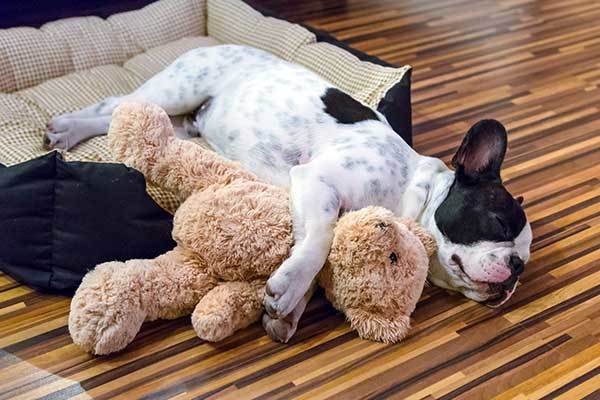
Similarly, dogs that have suffered past traumatic events may take longer to transition into their new environments. Dealing with such dogs requires patience, as the dogs find most sounds and sights unsettling. That underscores the importance of thoroughly investigating the history of a dog before bringing it home.
Since you’re adopting a puppy, the chances of it having suffered past traumatic experiences are much lower. But still, you want to ensure you accord your little furball a perfect setup where it feels happy, relaxed, and at home.
Generally, a puppy sanctuary should be a secluded spot where your little pooch can escape to, especially if it feels anxious or threatened.
The space should be confined, one that is somewhat detached from the prying eyes of other pets, little children, and other members of the family. A secluded spot is particularly instrumental in helping you impart proper potty and sleeping habits in the dog.
The following are some of the most essential items you’ll require in such a room;
1. A crate,
2. A drinking spot,
3. Doggie bedding,
4. Doggy gate and
5. Pee pad.
Besides, you may also want to supply the place with other typical doggie toys, as well as nourish it with a fragrance that the dog finds pleasant.
Tips on Making a New Puppy Transition into Its New Home
As we’ve already mentioned, the first step on how to make your new puppy feel at home is to create a pet-safe resting place.
The place should feature both a dog’s basic requirements, such as a crate, and other comforts, like doggie toys. The objective is to make the dog feel relaxed and get used to the new home much faster.
While most experts generally recommend getting the dog a crate, you should also ensure the place is easily accessible for the dog and one that’s tucked away from heavy foot traffic. Above all, the dog should still be able to monitor the happenings around the house.
The following are more tips on helping a new puppy adapt to its surroundings fast.
1. Adopt a pup that’s old enough
This is a very crucial tip that most pet parents often ignore. Like humans, pups need to spend a considerable duration of time with their mothers before they can be adapted.
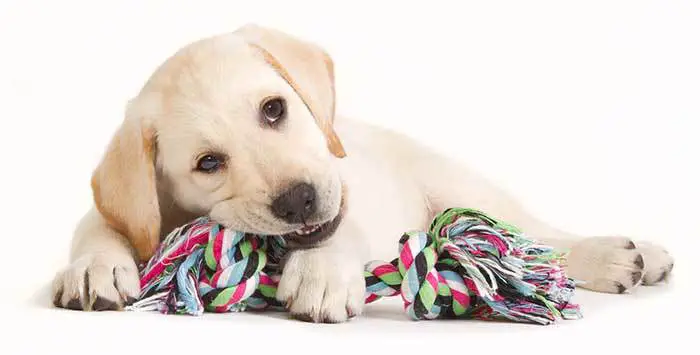
Generally, desist from getting a puppy that’s below eight weeks old.
Puppies below eight weeks should exclusively feed off their mother’s milk as that provides them with the requisite antibodies necessary for warding off diseases. During this time, the puppy will also acquire a sense of identity that will be instrumental during its developmental stages.
And even when transporting the dog home, ensure the ride is as smooth as possible. Carry the dog in a basket that’s well-cushioned, lightly covered, and one with chewable dog toys.
Throughout the journey, occasionally caress the dog’s head to make it less nervous. The idea is to make the dog feel as though it’s still within its mother’s tender care.
ALSO READ: How to Get A Puppy to Sleep through the Night (10 Tips)
2. Go easy on introductions
With time, you’ll need to introduce all the members of the family to your pup. However, take it slow, preferably introducing the dog to only one family member at a time.
During the introductions, ensure the dog thoroughly sniffs the person or pet that it’s being introduced to.
Dogs heavily rely on their senses of smell and once they pick up the scents of individual family members, they’ll feel a lot safer getting closer to them in the future. For skittish puppies, it’s wiser to do the introductions at a distance.
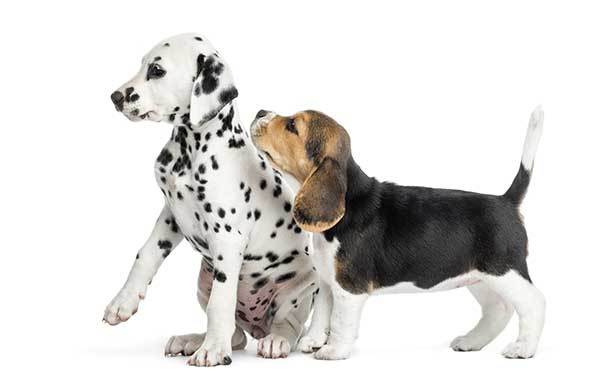
3. Establish a routine and stick to it
Dogs are creatures of habit and once you set up a routine, the dog will instinctively follow it. Of course, the routine you set must be one that serves the fundamental needs of the dog.
For instance, you can establish fixed feeding times and places, as well as specific times for sleeping, training, and bonding with your pup.
Then, repeat these patterns of events until the dog can naturally follow them on their own. And as much as you can, try not to depart from the routines as a slight departure could cause your dog to be anxious, confused, and uncomfortable.
4. If it calls for it, get a dog sitter
Your new pup is bound to experience anxiety if you leave it alone at home.
And depending on how prolonged your absence is, your pooch may develop separation anxiety, a condition that could have long-term mental and emotional impacts on the dog. But a semblance of sights and sounds will make the dog feel safer even while you’re gone.
If you live alone and have to go to work each morning, get your puppy a dog sitter. Ensure you lay the ground rules on how the dog sitter should introduce the pup to the various places within your home.
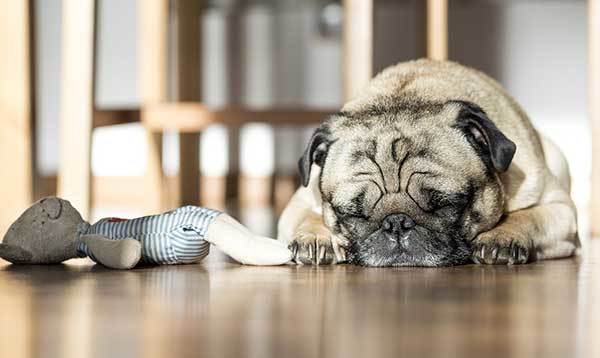
5. Leave lights, the radio, and TV on while you’re away
If you can’t get a dog sitter, you may consider leaving your radio, television, and lights on even when you’re not home.
However, first, establish if the dog feels comfortable in the company of musical or verbal company. Other dogs may find it more unsettling.
It’s also important to consider the talk radio stations or the history channels as they’re relatively monotone, hence unlikely to get the dog nervous.
Similarly, leaving lights on will go a long way in helping your pup keep calm. While they aren’t sleeping, dogs prefer to stay in lit conditions, so locking your pup inside a dark room might do it more harm than good.
ALSO READ: How to Teach a Puppy His Name (9 Simple Steps)
6. Avoid punishing your puppy using aversives
Contrary to what most pet owners believe, hitting or yelling at a dog in response to unbecoming conduct is counterproductive.
When you shout at your dog for having engaged in naughty behavior, the dog interprets the response as an urge to continue with that line of action. In the case of pups, shouting or hitting the dog could make it very afraid to interact freely with you, leading to more anxiety.
Instead of focusing on punishing bad behavior, why not consider rewarding good behavior through positive reinforcements. Have plenty of dog treats that you can offer to your puppy whenever it pulls a desirable stunt.
Most importantly, offer the treat as soon as the pup engages in good behavior, as that will make the dog identify the treat with the action.
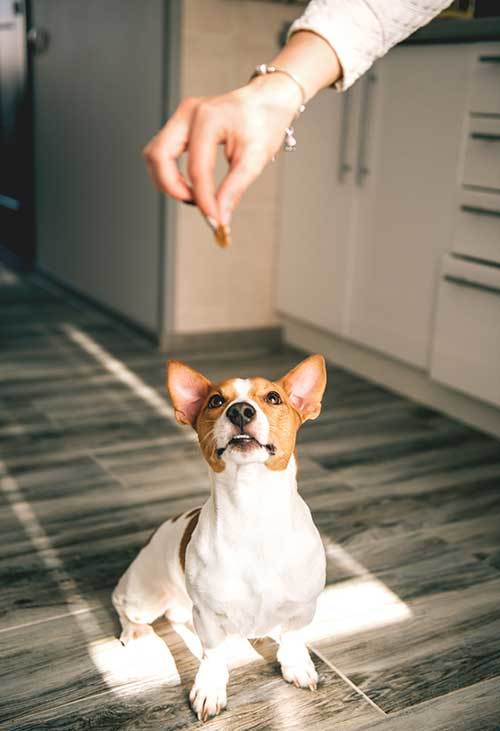
7. Make room for some snuggle and cuddle time
Puppies are used to snuggling with the warm bodies of their mothers and littermates. Therefore, you should make room for more snuggling to ensure the dog doesn’t realize it has been separated from its family.
When you’re home, spend as much time as possible with the dog, especially during the first few weeks of adopting it.
Let the puppy freely cuddle with you and feel your warmth and heartbeat. That will remind it of the warmth of its mother and consequently look to you as its source of security.
If possible, move its crate into your bedroom every night, as that proximity is instrumental for bonding purposes. As soon as the puppy is house-trained, you can now identify a safe spot for its crate outside your bedroom.
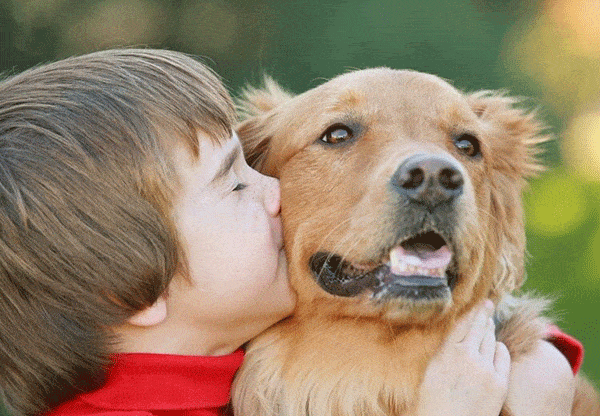
8. Take care of the lonely nights
That everyone else is asleep doesn’t necessarily mean your puppy is. Pups are known to whine during the first few nights in their new homes.
To help it through the lonely nights, ensure you leave lights on where the puppy sleeps and only turn them off when the dog falls asleep.
You might also consider leaving a clock ticking near its crate, to create those smooth and serenading rhythms. Also, cover the three sides of the crate with a light blanket. That will not only provide warmth to the dog but also allow it to get out of the crate if it needs to.
- Dog beds for large dogs supports better sleep: Round dog bed with donut shape design, satisfies the nesting instinct of dogs or cats who love to curl…
- The orthopedic dog bed with raised rim creates a sense of security and provides head and neck support, allows your pet to burrow, while the super-soft…
- The bottom of the waterproof dog beds for large dogs is designed with sticky beads and high-density fabric, waterproof, dirt resistant and anti skid….
Last update on 2024-12-27 / Affiliate links / Images from Amazon Product Advertising API
Taking Care of the Shopping List
If you’re like most pet parents, you may be at a loss regarding what to buy for your puppy during the first weeks of acquiring it.
The following are some of the items you might consider getting the dog;
- Chewable, rolling toys to help with teething and playing, respectively
- A cozy bedding with waterproof liners
- Puppy-based foods and supplements.
- Non-plastic and stable food and water bowls
- Ideal collar and leash, complete with identification tags
- A standard-size crate where the puppy can stand up, lie down, and roll over
- Grooming supplies
Getting a new puppy to acclimatize to its new home isn’t a walk in the park. But the saving grace is that puppies are easily adaptable.
Proper training and patience are all it takes to get the dog used to its new surroundings…
- FULL HD CAMERA & NIGHT VISION – The Furbo Dog Camera gives you HD video quality day & night. Stunning 1080p live view lets you easily check on your…
- 2-WAY AUDIO – Know what’s going on at home and talk to calm them down via the app.
- FUN TREAT TOSSING – Toss a treat to your dog through your Furbo dog treat dispenser camera via the free Furbo iOS/Android app. Fill your Furbo dog…
Last update on 2024-12-23 / Affiliate links / Images from Amazon Product Advertising API
Checkout Our Favorite Dog Products
1. BEST PUPPY TOY
We Like: Snuggle Behavior Toy with Heart Beat & Heat Pack – Ideal toy for new puppies.
2. BEST DOG TRAINING PROGRAM
We Like: Doggy Dan The Online Dog Trainer – Stop any dog problem and raise the perfect puppy with The Online Dog Trainer.
3. BEST FOOD FOR DOGS AND PUPPIES
We Like: Victor Super Premium Pet Food – Ideal for growing puppies and pregnant or lactating females. Also provides sustained energy for sporting dogs and dogs with high physical demands.
4. BEST DOG DNA TEST
We Like: Embark Dog DNA Test – Embark screens for over 250 dog breeds + tests for 170+ genetic diseases including MDR1 drug sensitivity, glaucoma, degenerative myelopathy, and dilated cardiomyopathy, some of the most common adult-onset diseases in dogs.
5. BEST DOG PUZZLE TOY
We Like: Outward Hound Interactive Puzzle Toy – Every dog loves chasing squirrels at the park. The Outward Hound Hide-a-Squirrel Puzzle Toy gives your dog the same feeling as though he was outdoors chasing live squirrels.
6. Best Vacuum to Tackle Pet Hair
We Like: ORFELD Cordless Vacuum – Engineered for homes with pets. With features and tools that dig out dirt, hair and allergens everywhere your pet gets.

